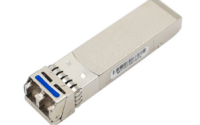Unlocking Next-Gen Connectivity with the 800G OSFP Transceiver
As data-driven technologies continue to evolve, the demand for faster, more reliable, and energy-efficient connectivity solutions has never been greater. In the context of high-performance computing (HPC), artificial intelligence (AI), and large-scale data analytics, the next frontier in data transmission is the 800G OSFP SR8 transceiver. This next-generation module is designed to meet the escalating needs of modern data centers, cloud computing, and telecommunications by offering unprecedented bandwidth, power efficiency, and scalability.
What is the OSFP Transceiver?
The 400G/800G OSFP (Octal Small Form-factor Pluggable) transceiver is a high-density, high-performance interconnect solution designed to support 800G Ethernet speeds. With its 8 channels, each supporting 100G, the OSFP offers the potential for a total throughput of up to 800G, making it ideal for environments that demand extreme bandwidth and low latency. Its small form factor ensures that data centers can achieve high density without sacrificing performance.
400G OSFP: The Precursor to 800G OSFP in Next-Generation High-Speed Networking
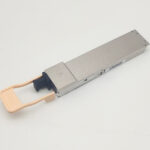

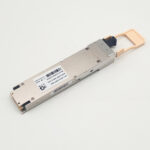
The 400G OSFP SR4 transceiver, the predecessor to the 800G OSFP, was a pivotal development in high-speed networking. Designed to meet the growing demand for greater bandwidth in data centers and telecom networks, the 400G OSFP provided a significant upgrade over previous generations, supporting up to 400Gb/s of data throughput. Its compact form factor, combined with high-density connectivity, allowed for efficient space utilization, making it ideal for environments where maximizing throughput per rack unit was essential. The 400G OSFP helped pave the way for the transition to even higher-speed interconnects like the 800G OSFP, laying the foundation for next-generation data transmission technologies.
800G OSFP: The Next Frontier in Connectivity


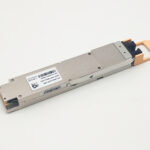
The 800G OSFP SR8 transceiver offers several significant advantages, making it a key player in the evolving landscape of high-performance computing and networking:
1. Unprecedented Bandwidth
One of the primary advantages of the 800G OSFP transceiver is its ability to deliver unprecedented bandwidth. Data centers, cloud services, and telecom operators are increasingly dealing with larger and more complex datasets, which require high-speed transmission capabilities. By supporting 800G speeds, the OSFP transceiver enables the transfer of massive amounts of data in a fraction of the time compared to previous generations of transceivers.The OSFP transceiver, with its multiple channels, facilitates data transfer at speeds that are essential for applications like AI, machine learning, and real-time analytics—areas where low latency and high throughput are critical.
2. Energy Efficiency
Another key benefit of the 800G OSFP transceiver is its focus on energy efficiency. As power consumption becomes a growing concern in large-scale data centers, this transceiver’s design optimizes power usage without compromising performance. By delivering more data per watt of power, the OSFP helps organizations reduce operational costs and meet sustainability goals.In addition, the compact and efficient design of the OSFP module allows for high-density connectivity, reducing the overall space required for interconnects in the data center, which further contributes to operational efficiency.
3. Smaller Form Factor, Higher Density
The OSFP transceiver’s small size enables it to fit into a high-density environment without the need for excessive rack space. This means data centers can scale their operations while maintaining high performance without needing to expand their physical infrastructure significantly.
The ability to achieve high density is particularly beneficial in modern data centers, where space is at a premium and efficiency is paramount. With OSFP, operators can increase the data transfer rate without the need for extensive upgrades to existing infrastructure.
4. Improved Heat Management
Managing heat dissipation is a critical aspect of maintaining system stability and performance in high-bandwidth applications. The OSFP transceiver has been designed with advanced thermal management features to ensure reliable operation even under heavy loads.
This feature is especially important in high-performance computing (HPC) environments, where the processing power and network load often generate significant heat.Efficient heat management allows OSFP transceivers to perform at their best without thermal throttling, maintaining consistent data rates and ensuring system reliability.
5. Scalability for Future Demands
The 800G OSFP transceiver is built to be scalable, supporting not only current high-bandwidth needs but also future demands. As data transmission technologies evolve, 800G will serve as a foundation for even higher speeds, allowing data centers and telecommunications providers to seamlessly upgrade their infrastructure to keep pace with the rapid growth of data traffic.
The scalability of OSFP is particularly important for organizations that want to ensure their network infrastructure remains future-proof. As applications become more data-intensive, the ability to scale connectivity without a complete system overhaul will be a major advantage.
Applications of 800G OSFP
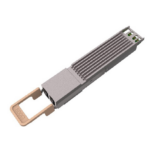
The 800G OSFP transceiver is poised to support a wide range of demanding applications, including:
High-Performance Computing (HPC):
HPC workloads, such as simulations and complex computations, require high-bandwidth, low-latency interconnects. OSFP enables fast data transfer to keep up with the high-speed computing requirements of these applications.
Cloud Services:
As cloud providers scale their services to accommodate increasing customer demand, 800G OSFP transceivers will be essential to ensure that data can be transferred quickly and reliably across the cloud infrastructure.
5G and Telecom Networks:
Telecom operators are under pressure to deliver high-speed, low-latency connections for a wide range of services. 800G OSFP transceivers will play a vital role in supporting the backbone infrastructure of 5G networks and beyond.
AI and Machine Learning:
The enormous datasets required for training AI models and running machine learning algorithms demand high-throughput interconnects. OSFP supports the rapid data transmission needed for these computationally intensive tasks.
In Conclusion
The 800G OSFP transceiver represents the next major step in the evolution of data transmission technologies. By offering high-speed data transfer, energy efficiency, scalability, and improved thermal management, it addresses the growing demands of modern data centers, cloud services, and telecommunications networks.
If you want to learn more about High-speed Networking, you can refer to this article.
Explore more: For more information on 400/800G OSFP Transceiver and related products, visit TARLUZ.com or contact our experts for personalized advice.

